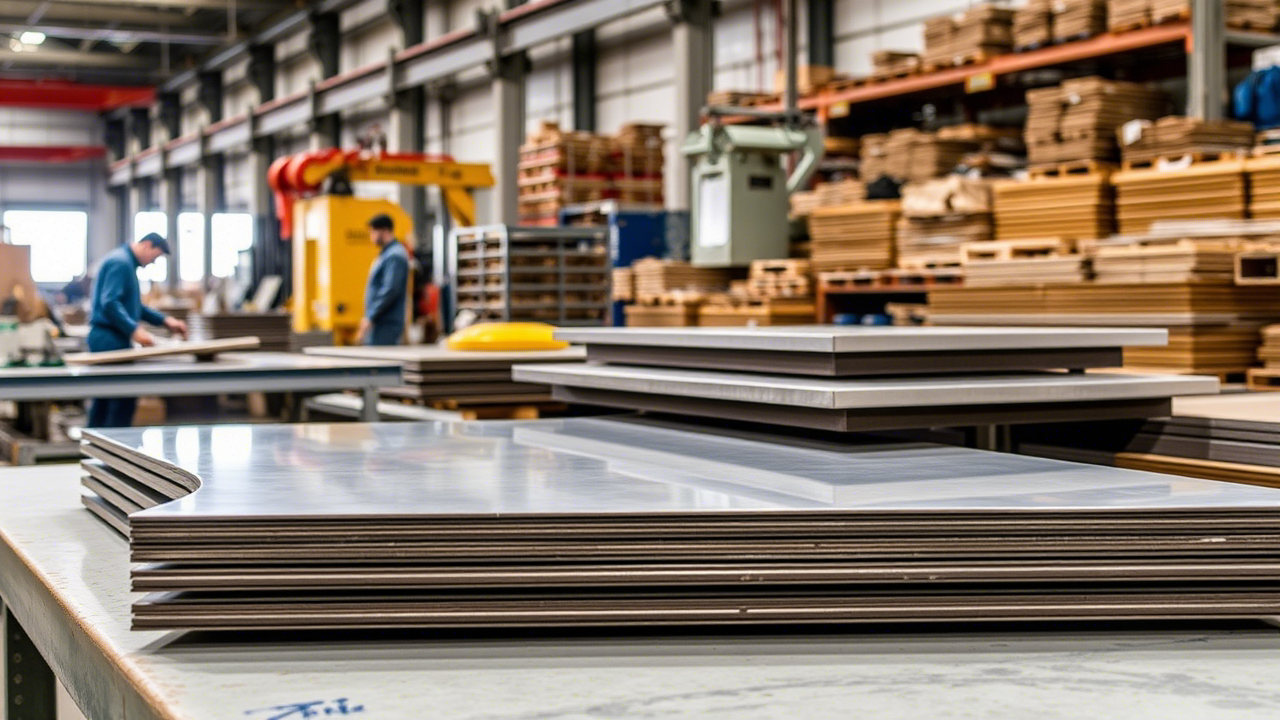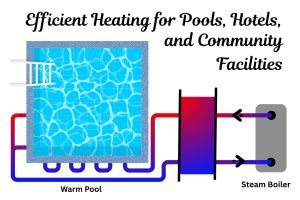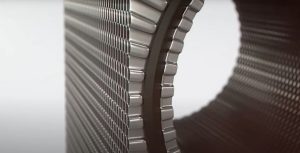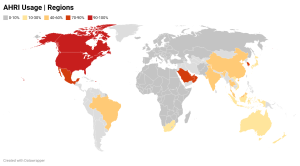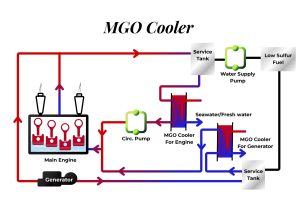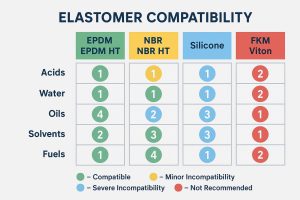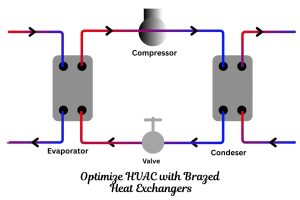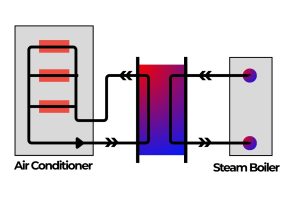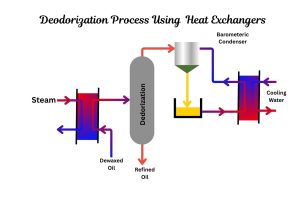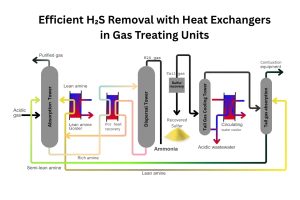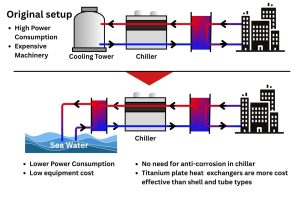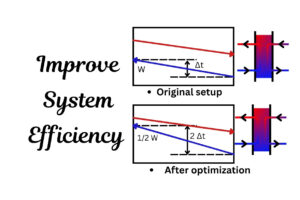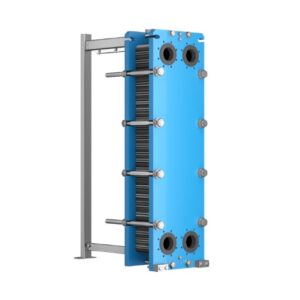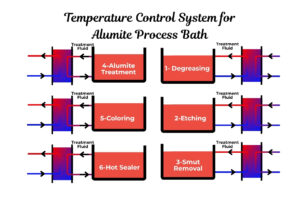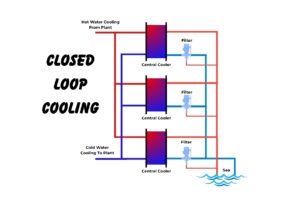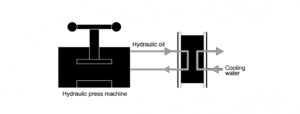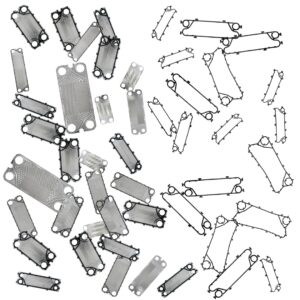Titanium Plates in Plate Heat Exchangers: The Ultimate Material for Extreme Corrosion
Plate Heat Exchangers (PHEs) are renowned for their efficiency and compact design across diverse industries. While materials like stainless steel, nickel alloys, and even exotic materials are used for their plates, titanium holds a unique position. It is often the material of choice when operating conditions involve highly corrosive fluids that would rapidly degrade other metals, making it indispensable for challenging heat transfer applications.
For engineers specifying heat exchange equipment in environments handling seawater, aggressive chlorides, or certain acids, understanding the benefits and background of titanium plates is crucial. Despite its higher cost, titanium offers unparalleled durability and reliability in severe service, preventing costly failures and downtime.
Why Choose Titanium for PHE Plates? Unrivaled Properties
Titanium’s suitability for the most demanding PHE applications stems from its exceptional properties:
- Exceptional Corrosion Resistance: Titanium forms a tenacious, self-healing passive oxide layer on its surface when exposed to oxygen or moisture. This layer provides outstanding resistance to a wide range of corrosive media, most notably:
- Chlorides: Titanium is virtually immune to pitting, crevice corrosion, and stress corrosion cracking in chloride-containing environments, including seawater, brines, and various industrial chlorides, even at elevated temperatures. This is a key advantage over even high-grade stainless steels like 316L or duplex alloys, which can be susceptible to chloride attack.
- Oxidizing Acids: Resistant to nitric acid, chromic acid, and inhibited sulfuric acid.
- Alkaline Solutions: Good resistance to many alkaline solutions.
- High Strength-to-Weight Ratio: Titanium is as strong as steel but about 45% lighter. This contributes to lighter PHE units, though the plate thickness is determined more by pressure rating and stiffness needs than weight.
- Temperature Resistance: Titanium maintains excellent corrosion resistance and mechanical properties at elevated temperatures, making it suitable for hot corrosive streams.
- Erosion Resistance: Offers good resistance to erosion in high-velocity fluid streams.
Applications Where Titanium PHE Plates are Essential
Due to its unique corrosion resistance, titanium is specified for PHEs in industries facing the most aggressive fluids:
- **Seawater Cooling:** On ships, offshore oil and gas platforms, coastal power plants, and in desalination plants, seawater is a common cooling medium. Its high chloride content necessitates titanium or other highly resistant alloys.
- **Chemical Processing:** Handling corrosive chemicals, acids, bases, or process streams containing chlorides or other aggressive species.
- **Oil & Gas:** Processing produced water, specific corrosive hydrocarbons, and offshore applications exposed to the marine atmosphere and seawater.
- **Desalination Plants:** Critical for handling corrosive brines and seawater throughout the process.
- **Pharmaceutical & Fine Chemicals:** Where aggressive solvents or cleaning agents are used, or high purity is required.
- **Geothermal Energy:** Handling hot, often saline and corrosive geothermal fluids.
A Brief Look at Titanium’s History and Industrial Origin
Discovered in the late 18th century, titanium remained a laboratory curiosity for over a century due to the difficulty and expense of extracting the pure metal. Its industrial potential began to be realized in the mid-20th century with the development of the Kroll process, which allowed for commercial-scale production of titanium sponge.
Early adoption was driven by the aerospace industry due to titanium’s high strength-to-weight ratio. As production processes matured and costs gradually decreased, titanium’s exceptional corrosion resistance opened doors to other demanding sectors, including chemical processing, marine engineering, and later, critical components like heat exchanger plates where its properties offered solutions unmatched by more common metals. Its use in PHEs evolved as PHE technology itself advanced and became more widely adopted in industries dealing with aggressive fluids.
From Ore to Plate: Sources and Suppliers
Titanium is not found as a pure metal but is abundant in mineral deposits within the earth’s crust, primarily in the form of ilmenite ($FeTiO_3$) and rutile ($TiO_2$).
- Major Ores & Mining Locations: Large deposits of ilmenite and rutile are mined globally. Key producing countries include Australia, South Africa, Canada, China, Norway, Ukraine, and India.
- Extraction & Processing: Converting ilmenite or rutile into usable titanium metal is a complex and energy-intensive process (like the Kroll process), producing titanium sponge, which is then melted and processed into ingots, billets, and eventually mill products like sheets and plates.
- Major Mill Product Suppliers: Several large global companies specialize in producing titanium mill products (sheets, plates, bars, etc.). Some prominent examples include Timet (USA), VSMPO-AVISMA (Russia), Allegheny Technologies Incorporated (ATI, USA), and Baoji Titanium Industry Co. (China).
- Titanium PHE Plate Suppliers: The manufacturers of Plate Heat Exchangers (like Alfa Laval, GEA, Kelvion, Danfoss, Tranter, etc.) purchase these titanium mill products and use specialized pressing and manufacturing processes to produce the finished corrugated heat exchanger plates. Therefore, the major PHE manufacturers are typically your suppliers for titanium heat exchanger plates and units, leveraging their material sourcing and plate manufacturing expertise.
Is Titanium Right for Your Application? Balancing Cost and Performance
While titanium offers superior performance in corrosive environments, it comes at a significantly higher cost than stainless steels. The decision to use titanium must be based on a thorough engineering analysis that weighs the upfront capital expenditure against the long-term benefits:
- Longevity: In corrosive service where other materials fail quickly, a titanium PHE can last for decades, far exceeding the lifespan of a cheaper unit made from a less resistant material.
- Reliability & Uptime: Titanium minimizes the risk of unexpected corrosion-related failures, ensuring consistent operation and avoiding costly downtime for repairs or replacement.
- Safety: Prevents leaks of hazardous or corrosive fluids.
If your process involves highly corrosive media, especially chlorides or seawater, titanium is often not just an option, but a necessary investment for reliable and safe operation.
Conclusion
Titanium plates are the go-to solution for Plate Heat Exchangers operating in the most challenging corrosive environments. Their exceptional resistance to chlorides, seawater, and various aggressive chemicals provides a level of reliability and longevity that justifies their higher cost in critical applications. Understanding titanium’s unique properties, its history of industrial adoption, and its journey from ore to finished plate highlights why it remains the ultimate material for these demanding heat transfer duties.
Choosing the correct material for your heat exchanger is paramount to its performance and lifespan. At HeatingFormula, we have extensive experience with high-performance materials, including titanium, for Plate Heat Exchangers. Our engineers can help you evaluate your specific process conditions and recommend the most suitable and cost-effective material solution, ensuring optimal performance and long-term reliability. Explore our GPHE Selection Guide or Contact us to discuss your challenging heat exchange application and learn how titanium PHEs or other specialized units and GPHE Spare Parts can meet your needs.
Frequently Asked Questions (FAQ) About Titanium PHE Plates
-
Q: Why is titanium used in Plate Heat Exchangers?
A: Titanium is used in Plate Heat Exchangers (PHEs) because of its exceptional corrosion resistance, particularly against chlorides, seawater, and aggressive chemicals. This makes it indispensable for applications where more common materials like stainless steel would quickly fail. -
Q: Where does titanium come from?
A: Titanium is derived primarily from mineral ores like ilmenite and rutile found in the earth’s crust. Major mining countries include Australia, South Africa, Canada, China, and others. The process to extract pure titanium is complex and energy-intensive. -
Q: Is titanium always the best material for corrosive heat exchange?
A: Titanium offers unparalleled resistance in many aggressive environments, especially those involving chlorides. However, for less severe conditions, other alloys like high-grade stainless steels (e.g., 316, duplex) or nickel alloys might suffice and be more cost-effective. The ‘best’ material depends on a detailed analysis of the specific corrosive media, temperatures, and pressures of the application. -
Q: Can Titanium plates be repaired?
A: Yes, titanium plates can often be repaired, but it requires specialized welding techniques and expertise due to the material’s properties. Repair versus replacement is usually determined based on the extent of the damage and cost analysis. -
Q: What are some alternatives to titanium for highly corrosive PHE applications?
A: Alternatives depend heavily on the specific corrosive agent. For some acids or high-temperature applications without significant chlorides, nickel-based alloys (like Hastelloys) might be considered. For chloride resistance, super austenitic stainless steels (like SMO 254) or duplex/super duplex stainless steels offer good, but generally less, resistance than titanium, particularly at higher temperatures or chloride concentrations.
